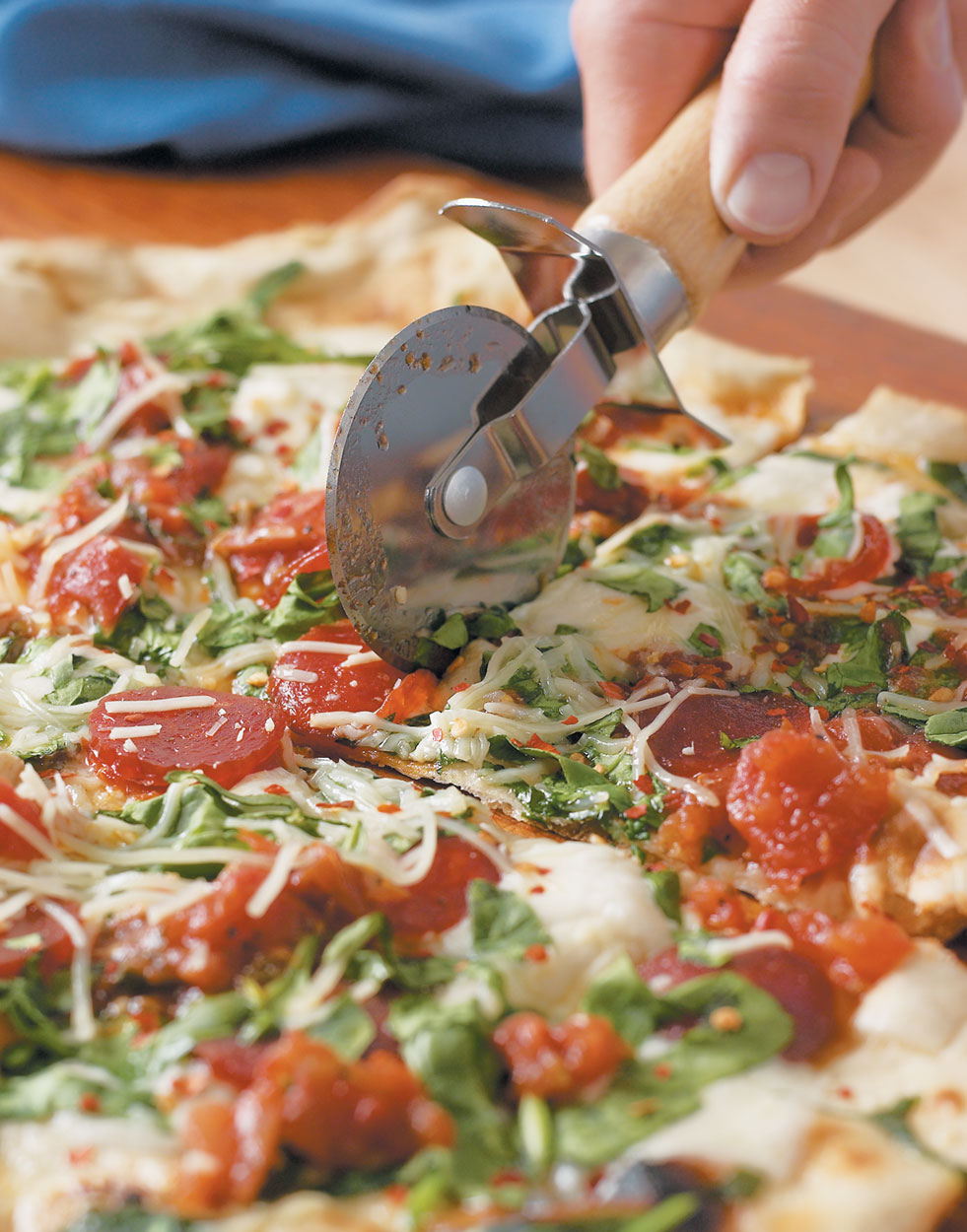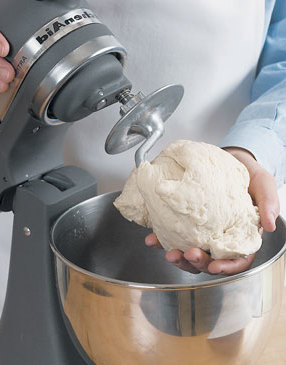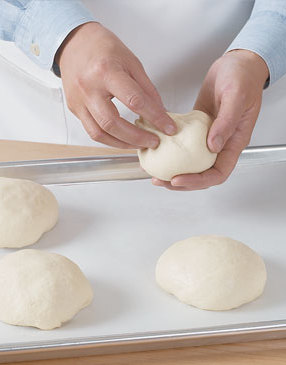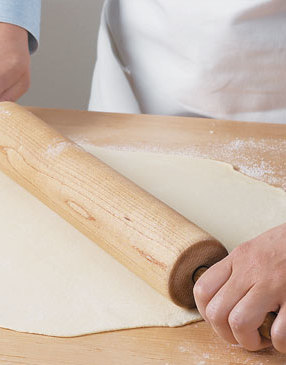
Lunch / Dinner
Pizza Dough
This universal pizza dough contains a mix of all-purpose and cake flour for a very elastic, yet tender dough. Bonus, it can be rolled thinly for an Italian-style crust that you'll love, especially for grilled pizza. And be sure to check out our quick tutorial on How to Make Grilled Pizza.
Ingredients
Combine:
Mix:
Add:
Yeast Tip
To test if yeast is alive or dead, it needs to be mixed with warm water. The water must not be too hot or too cold — water hotter than 120 degrees will kill yeast, but cool water won’t allow it to activate. Let the water-yeast mixture stand 5–10 minutes, then check if it’s bubbly and thick, or if it has expanded. If the mixture hasn’t changed much (or at all), then the yeast is dead. Start over with new yeast.
Instructions
Combine water, sugar, and yeast. Proof until foamy, about 5 minutes.
Mix flours and salt in the bowl of a stand mixer fitted with a dough hook.
Add oil to yeast mixture once it has proofed, then pour into flour mixture. Knead on low speed 10 minutes (if kneading by hand, knead same amount of time).
Place dough in a lightly oiled bowl, turning to coat. Cover with plastic wrap and let rise in a warm place until doubled, about 2 hours.
Punch dough down and divide into four balls, pinching the bottoms closed. Cover with plastic wrap, and let rise in a warm place another hour.
Press 1 dough ball out on a lightly floured surface. Turn dough, pressing on its center, then roll into a 10- to 12-inch circle; transfer to a grill (or a pizza peel generously dusted with cornmeal if baking on a preheated stone), then add toppings and grill (or cook) according to your recipe. Repeat pressing, turning, rolling, and topping remaining dough balls.
Editor's Notes
Proofing: To trigger yeast’s leavening powers, it needs to be proofed. Proof yeast by dissolving it in a mixture of warm water and a little sugar. When the mixture turns foamy, you know the yeast is active. Then it’s time to add the flour. See Yeast Tip for checking if yeast is alive.
Kneading: Kneading is the process of developing gluten which allows the dough to stretch. A stand mixer makes it easy, but the dough can be kneaded by hand, too. The dough is ready for rising when it is smooth and springs back when poked gently with your finger.
Rising: Pizza dough develops flavor and texture during rising. It’s important to let dough rise at room temperature (about 75 degrees), not in a heated oven or near an air conditioner. Excess heat will cook the dough, while cold temperatures will slow down the yeast’s action.

Knead dough on low speed for 10 minutes. The dough will climb up the hook when it’s ready.

After 2 hours, divide dough into four balls. Pinch bottoms to keep air out and let dough rise 1 hour more.

On a lightly floured work area, roll dough from the center to the edge to form a 10- to 12-inch circle.